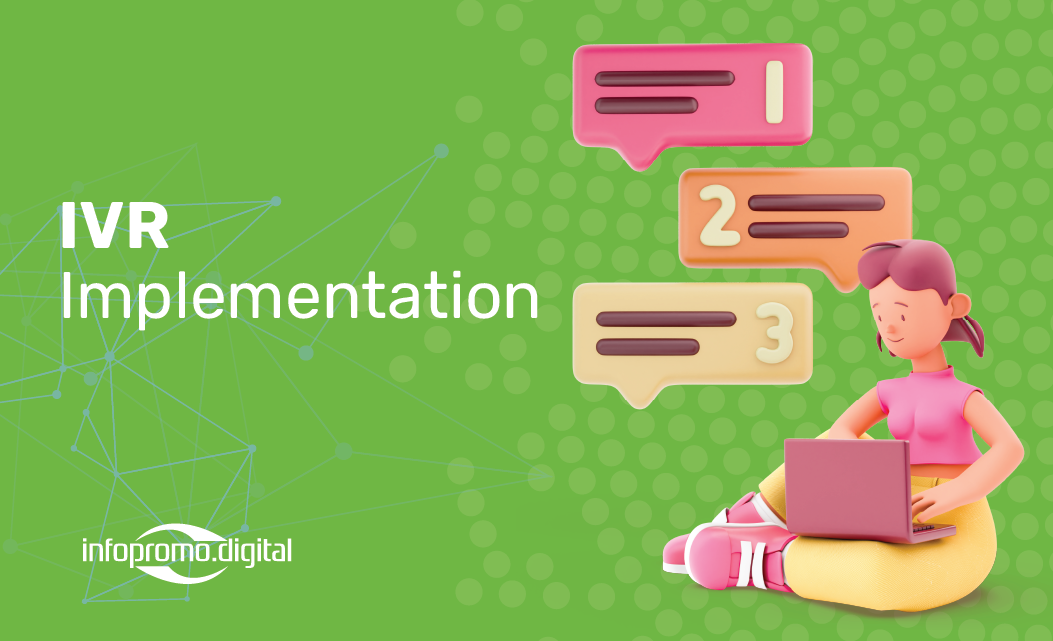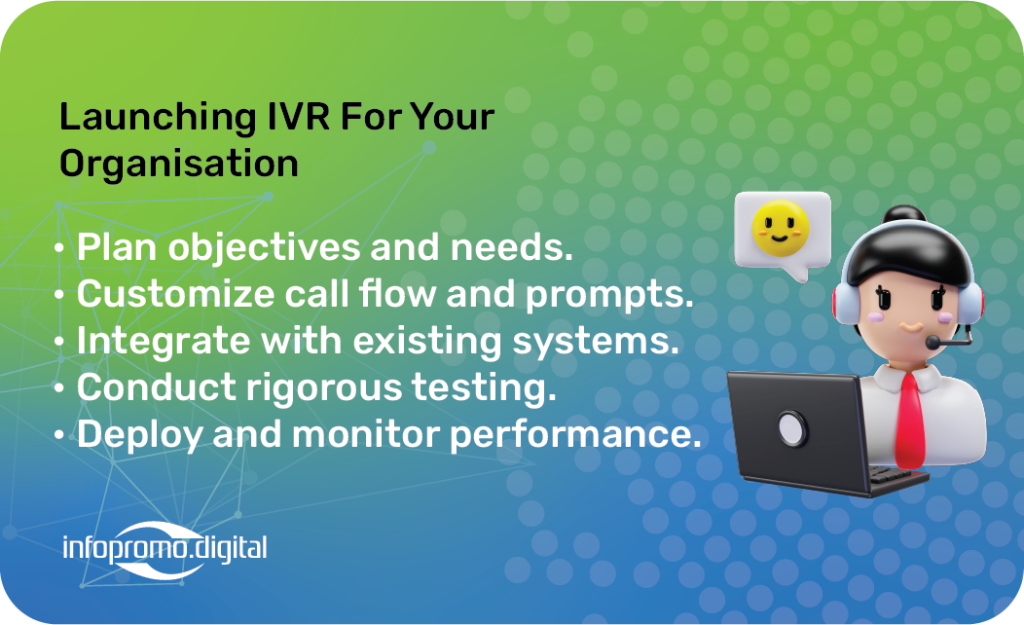
In today’s fast-paced business environment, Interactive Voice Response (IVR) systems have become essential for enhancing customer service and streamlining operations. Implementing an IVR system in your organization requires careful planning and execution to ensure it meets your needs and delivers a seamless experience for your customers. This guide will cover the key steps involved in IVR implementation, from initial planning to customization, testing, and deployment.

1. Planning Your IVR System
Effective IVR implementation begins with thorough planning. Start by identifying your objectives and the specific needs of your organization. Determine the primary functions of the IVR system, such as handling customer inquiries, directing calls to appropriate departments, or providing automated responses to frequently asked questions. Collaborate with stakeholders to define the desired outcomes and ensure alignment with your overall business strategy.
2. Customizing Your IVR
Customization is crucial for creating an IVR system that reflects your brand and meets your unique requirements. Work with a team of developers to design the call flow and menu options that guide customers through the system. Use clear and concise language to create prompts that are easy to understand and navigate. Consider incorporating natural language processing (NLP) capabilities to enhance user experience and allow customers to interact with the system more naturally.
3. Integrating IVR with Existing Systems
Seamless integration with your existing systems is essential for maximizing the effectiveness of your IVR solution. Ensure that your IVR system can communicate with your Customer Relationship Management (CRM) software, databases, and other relevant tools. This integration enables personalized interactions and allows the IVR system to access customer information in real time, providing a more efficient and tailored service.
4. Testing Your IVR System
Before deploying your IVR system, conduct rigorous testing to identify and address any potential issues. Perform functional testing to ensure all features work as intended and usability testing to evaluate the user experience. Gather feedback from a select group of users to make necessary adjustments and improvements. Pay close attention to voice quality, response accuracy, and overall system performance during this phase.

5. Deploying and Monitoring Your IVR
Once your IVR system is thoroughly tested and refined, it’s time for deployment. Launch the system in a controlled environment to monitor its performance and make any final adjustments. Provide training for your staff to familiarize them with the new system and ensure they can assist customers effectively. Continuously monitor the IVR system post-deployment to identify any areas for improvement and to ensure it remains aligned with your business objectives.
Conclusion
Implementing an IVR system in your organization can significantly enhance customer interactions and operational efficiency. By following a structured approach to planning, customization, integration, testing, and deployment, you can create an IVR solution that meets your needs and delivers a superior experience for your customers. Stay proactive in monitoring and optimizing the system to ensure it continues to provide value and support your business goals.




